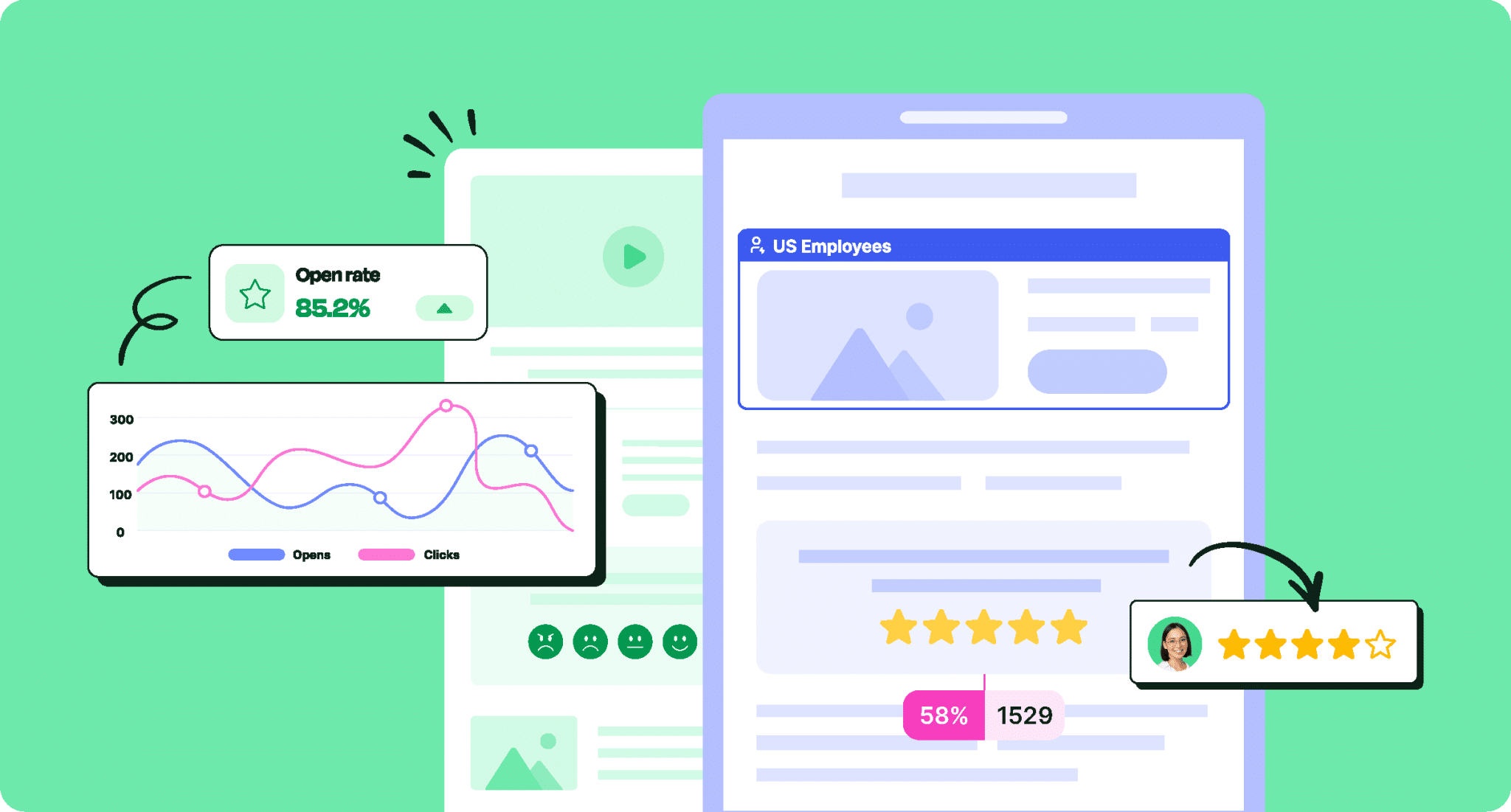Remote work isn’t going anywhere—and neither is the need for better remote team communication. In this guide, we’re breaking down the 7 best communication tools for remote teams in 2025 to help you keep employees connected, engaged, and informed no matter where they are.
Whether you’re working from a home office, a coworking space, or halfway across the world, one thing is for sure: effective communication directly contributes to overall performance across teams. And now, in 2025, businesses are asking how to do remote work even better.
The new challenge facing both internal comms and HR leaders is managing remote work as a long-term, sustainable model—one that keeps teams connected, engaged, and productive for the future.
Investing in the best communication tools for remote teams is the answer to supporting real-time collaboration, knowledge sharing, and connection, no matter where your people are logging in from. Read on as we dissect which communication tools are best for remote teams this year, their benefits, and how to pick them.
Take a self-guided tour of ContactMonkey
See how our key features can streamline your internal communications.
Take product tour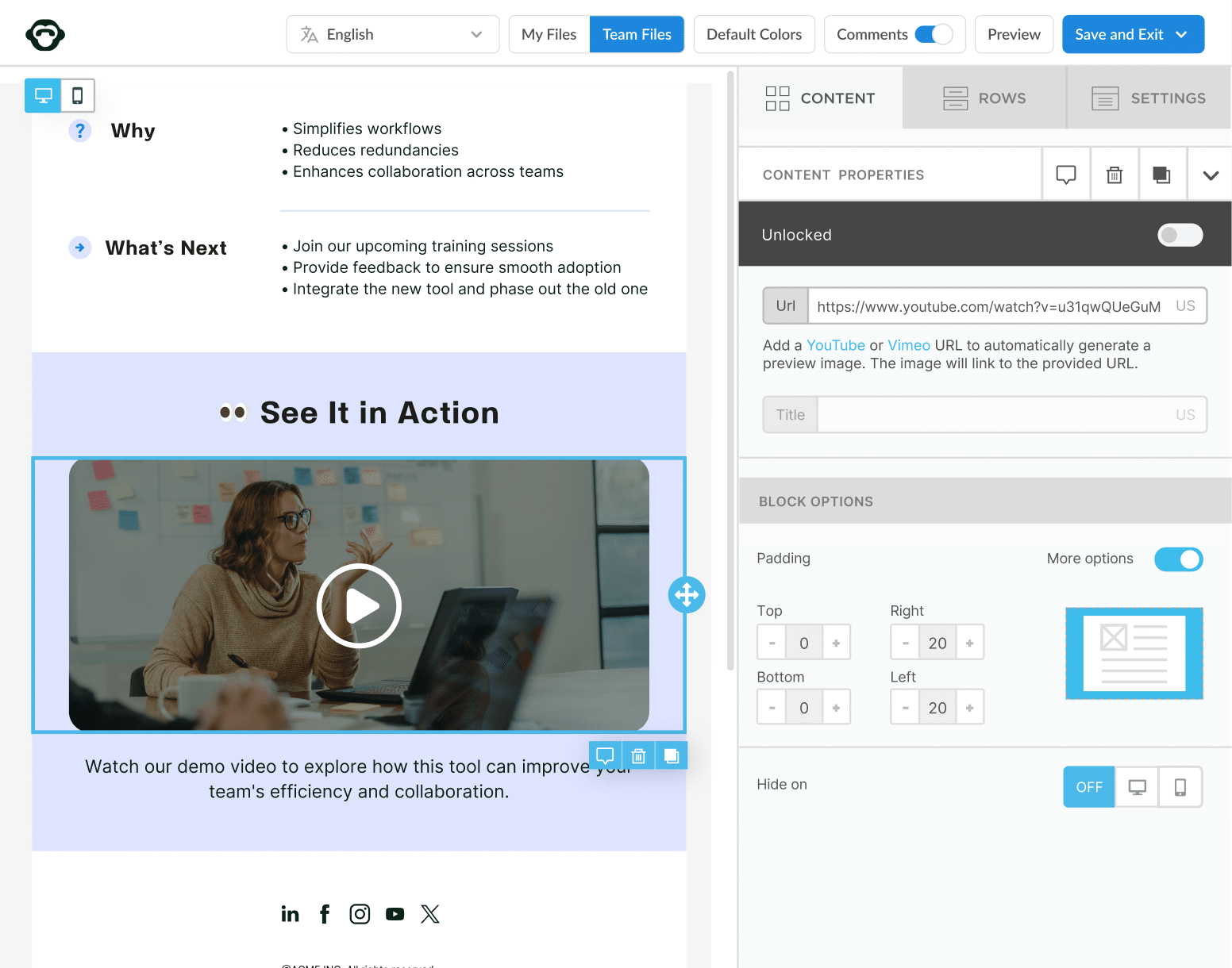
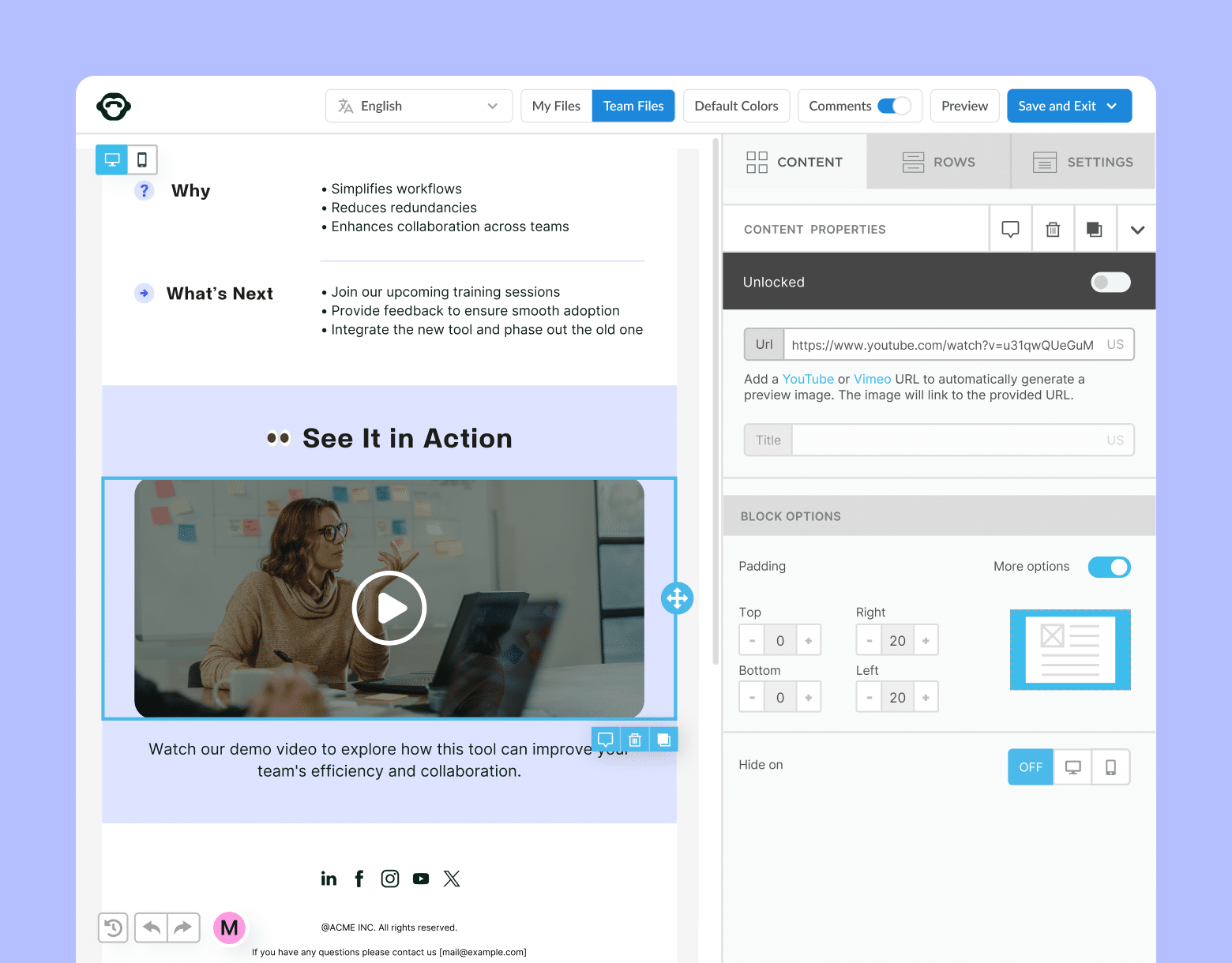
Why Keeping Remote Teams Engaged Is So Important
Remote work offers flexibility, freedom, and access to global talent—but it also brings a hidden challenge: disconnection. Without the natural interactions of an office environment (like those casual chats by the coffee machine or quick desk-side check-ins) remote employees can easily feel isolated or overlooked.
Here’s why keeping remote teams engaged is key for the health and performance of your business:
- Stronger company culture: Remote doesn’t have to mean detached. With the right remote engagement tools, companies can foster a culture of connection, transparency, and trust—even across time zones.
- Boosts productivity and performance: Engaged remote teams are not only happier—they work more efficiently. When employees are informed, aligned, and motivated, output increases and teams hit their goals with greater consistency.
- Improves morale and job satisfaction: At its core, engagement is about making people feel connected, appreciated, and motivated. When employees feel informed, included, and recognized, morale rises—and so does job satisfaction, retention, and loyalty.
- Reduced turnover: When employees feel seen, heard, and valued, they’re far more likely to stick around.
- Better communication and collaboration: Engagement encourages open communication and teamwork. And with the right remote team communication tools, collaboration can be just as effective—if not more so—than in person.
- Improved mental health and well-being: Employees who feel engaged are less likely to report burnout. A simple check-in using your remote communication software can go a long way toward showing that your team matters.
Benefits of Modern Communication Tools for Remote Teams
Modern communication tools for remote workers offer much more than messaging or video calls. Beyond improved internal communication, the right tools can:
- Improve collaboration and transparency
- Enhance remote employee engagement
- Streamline workflows and reduce silos
- Boost morale with real-time recognition and connection
- Provide a central hub for project updates and feedback
By integrating remote work communication tools into your operations and pairing them with internal communication systems, you’re enabling your team to work smarter, not harder.
Start two-way conversations and employee feedback loops
Learn how to engage staff with pulse surveys, content ratings and reactions, custom polls, and more. Ready to send modern emails?
See engagement features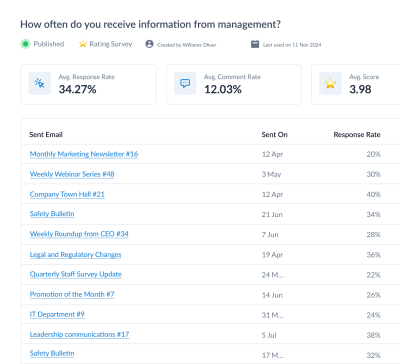
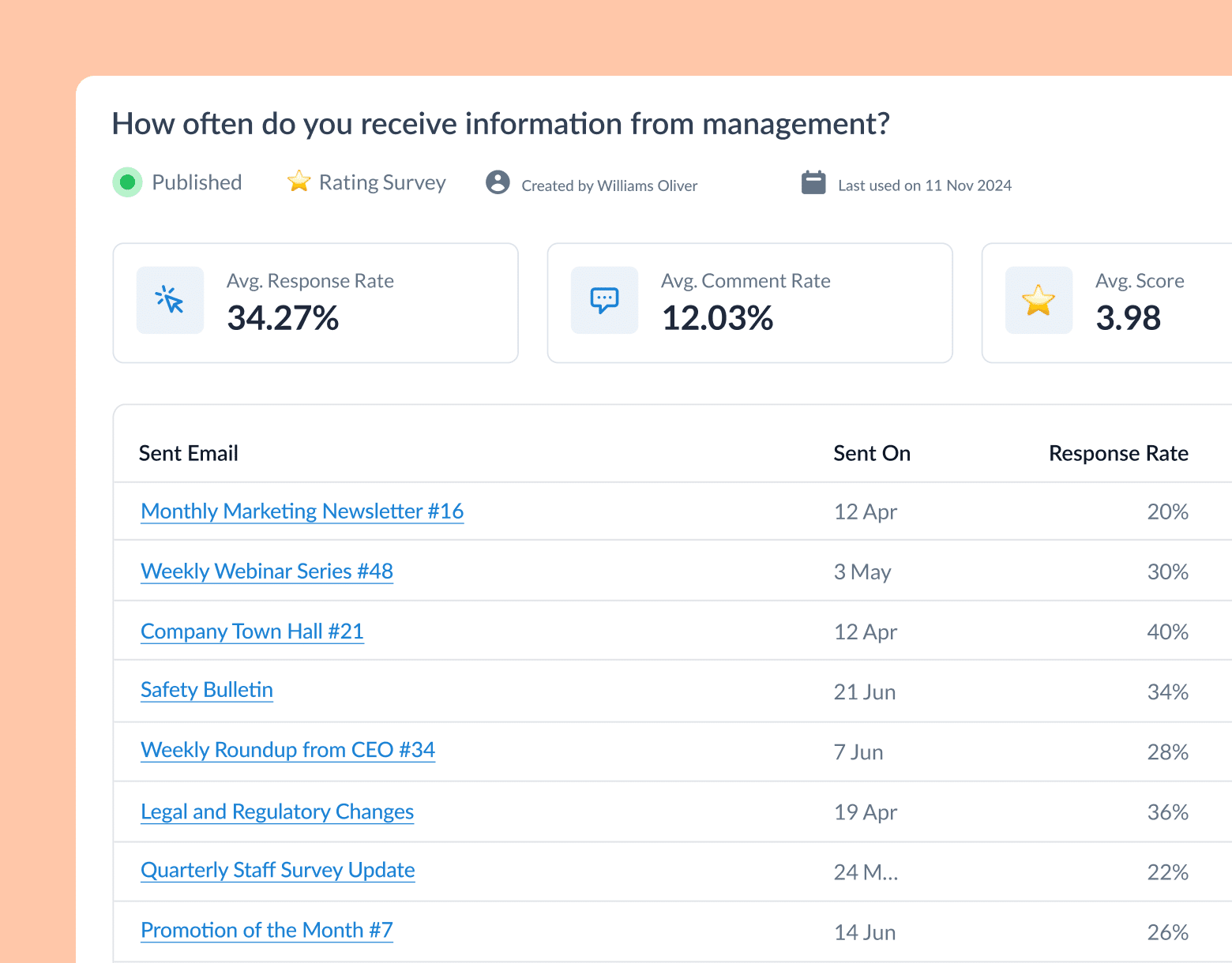
How to Pick the Best Remote Communication Tools
Choosing the best communication tools for remote teams starts with identifying your team’s unique needs. Here are essential features to consider and key questions to ask as you’re assessing a remote communication tool:
- Ease of use: The tool should be intuitive and user-friendly.
Ask yourself: Will my team need extensive training, or can they start using it right away? - Asynchronous capabilities: Not everyone is online at the same time.
Ask yourself: Does this tool support communication across time zones without requiring real-time interaction? - Integration: Look for tools that integrate with existing platforms like Google Workspace, Slack, or Outlook.
Ask yourself: Can this tool easily connect with the systems we already use every day? - Collaboration features: Think document sharing, project management, and video calls.
Ask yourself: Can this tool support both structured workflows and spontaneous collaboration? - Security: Especially important when handling sensitive or internal information.
Ask yourself: Does this tool meet our organization’s data privacy and compliance standards? - Engagement features: Look for tools that help drive connection, feedback, or recognition.
Ask yourself: Can this platform support employee surveys, recognition, or feedback loops to boost engagement?
7 Best Remote Communication Tools, Apps, and Software
Let’s explore 7 of the best communication tools for remote teams in 2025, covering how they work, their benefits, and how to implement them effectively.
1. ContactMonkey
A powerful internal communications platform designed for Outlook and Gmail, ContactMonkey enables organizations to send, track, and optimize employee emails—all without leaving the inbox.
Benefits for remote teams:
- Sends interactive internal emails and employee newsletters directly from Outlook or Gmail
- Tracks email engagement metrics (opens, clicks, read time, etc.) via the Analytics Dashboard feature
- Enables feedback through surveys, emoji reactions, and comments through Employee Feedback features
- Integrates seamlessly into existing workflows—no new platform needed
How to use it: Use ContactMonkey to send out company announcements, HR updates, event invites, and pulse surveys. With built-in analytics, you can continuously optimize communication based on real engagement data.
Effective rollout:
- Train communicators and department heads on how to create and send email campaigns
- Set up branded, reusable templates for consistent internal messaging
- Schedule regular communications (e.g., weekly employee newsletters, monthly CEO updates)
How to promote utilization:
- Share open and click rate dashboards with leadership to show communication ROI
- Use survey responses to highlight employee voices in upcoming newsletters
- Encourage managers and leaders to submit relevant content for your IC team to deploy the information through ContactMonkey
BONUS: Email is still one of the most widely used channels for communicating with employees. Learn about how to engage remote employees with email by checking out our list of 15 strategies.
Modern internal comms and measurement tools
No design or technical expertise needed. Save time, increase engagement, and dazzle your employees with fun and interactive communications.
Explore all features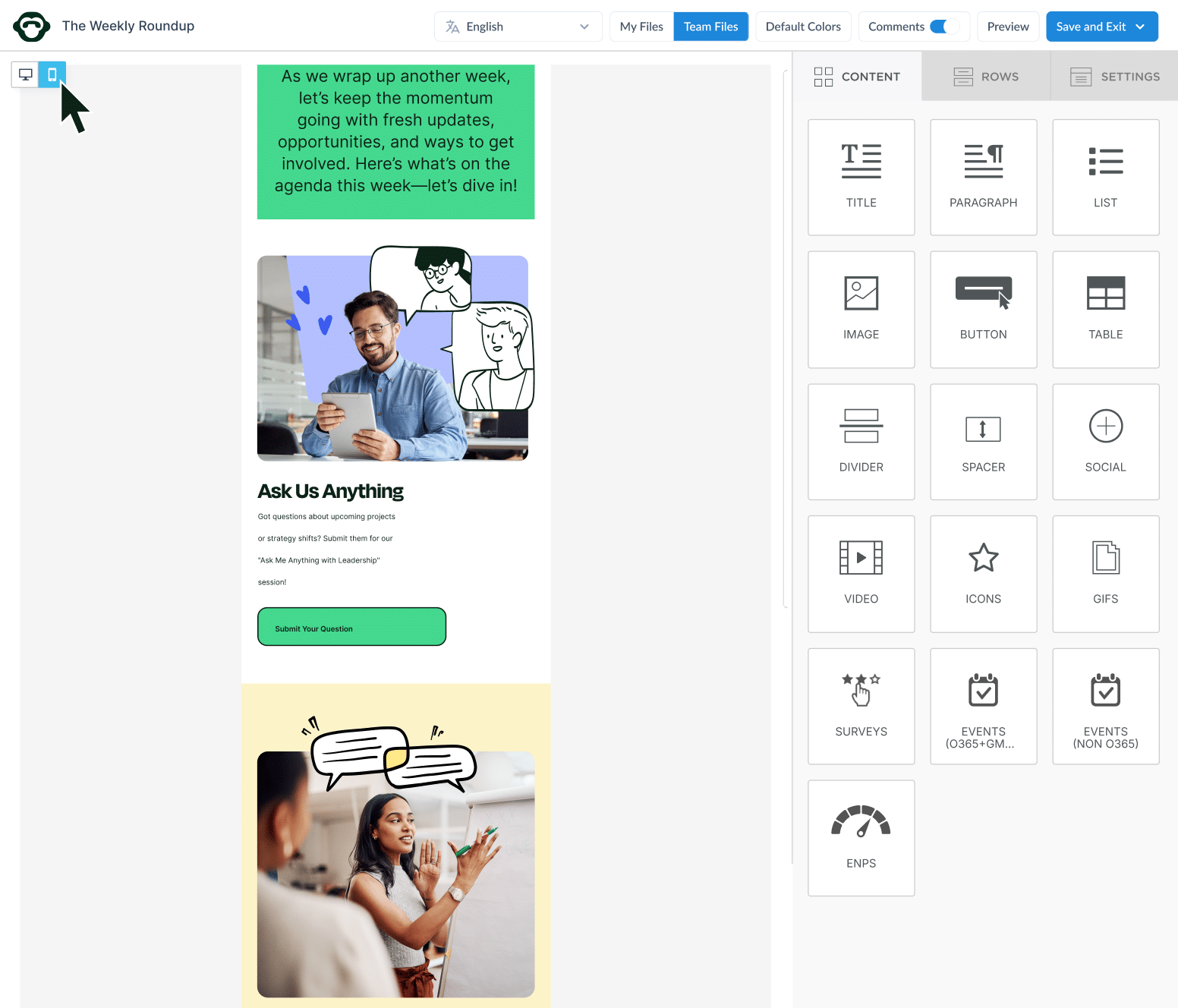
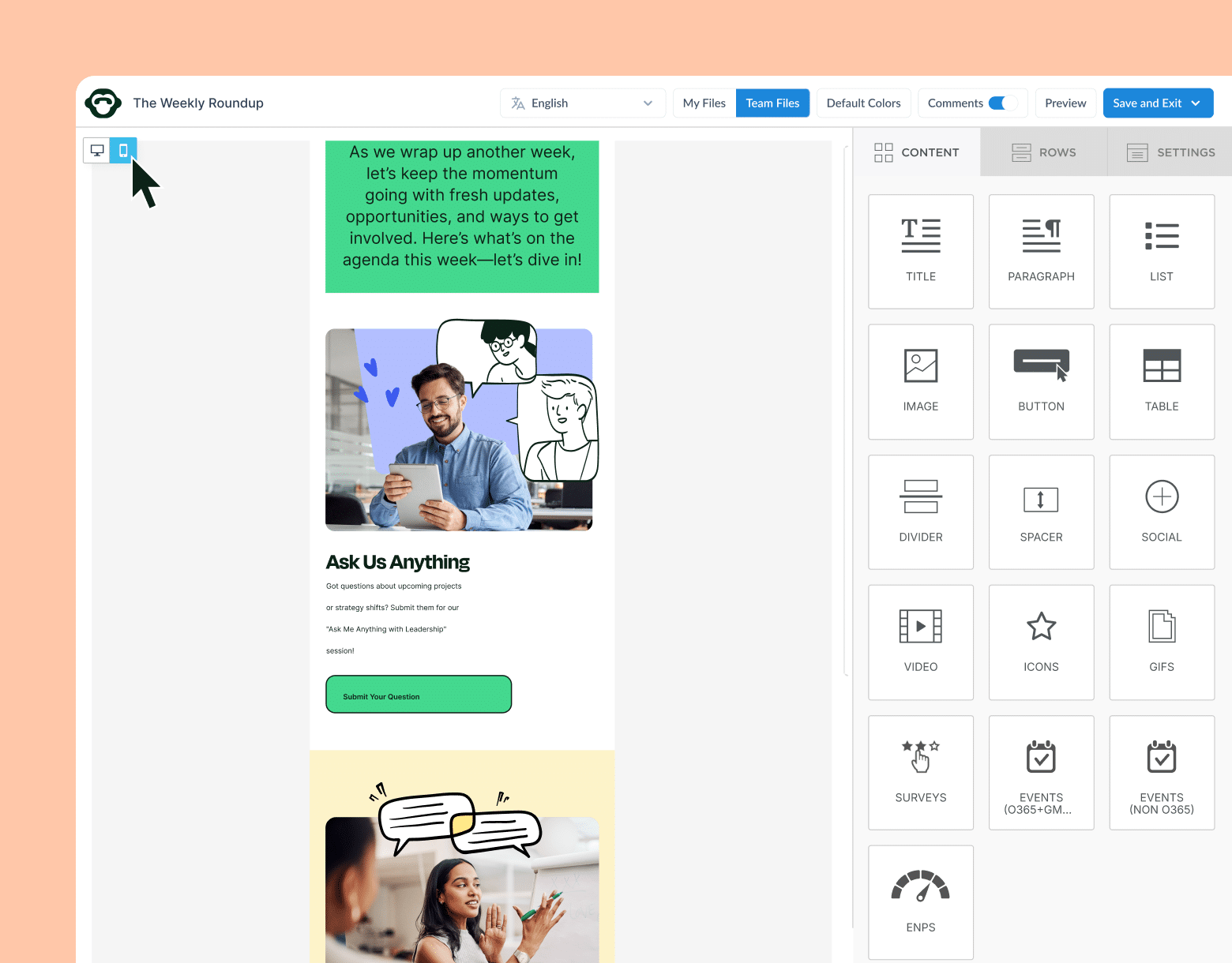
2. Slack
A real-time messaging platform built for workplace collaboration with dedicated channels for projects, teams, or topics.
Benefits for remote teams:
- Enables quick, asynchronous communication
- Organizes discussions with threaded channels
- Integrates with 2,400+ remote workforce tools like Google Drive and Zoom
How to use it: Use Slack for team updates, informal chats, and cross-functional project collaboration using dedicated channels.
Effective rollout:
- Create onboarding channels for new hires
- Share Slack etiquette docs in a #general channel you create and via email
- Schedule a team-wide training on using threads, mentions, and integrations
How to promote utilization:
- Pin a guide to communication tools for remote workers in a top-level channel
- Use engagement bots like Donut to strengthen team connections
- Highlight Slack wins during standups
BONUS: To learn more about collaboration tools, read our article on the best internal collaboration tools.
3. Zoom
One of the most widely used remote communication tools, ideal for virtual meetings, training, and collaboration.
Benefits for remote teams:
- High-quality video and audio with screen sharing
- Breakout rooms for group discussions
- Integrates with calendars and remote work communication tools
How to use it: Host daily huddles, company town halls, training sessions, and virtual team-building activities via Zoom.
Effective rollout:
- Provide onboarding materials for meeting setup and etiquette
- Offer refresher sessions on using advanced Zoom features
- Establish standards for virtual backgrounds and screen sharing
How to promote utilization:
- Record meetings and share via your remote communication software
- Gamify Zoom usage (e.g., most creative background, best attendance)
- Use Zoom polls for quick feedback in remote team communication tools
4. Google Workspace
A collaborative suite of remote communication tools including Gmail, Google Meet, Docs, Sheets, and Drive.
Benefits for remote teams:
- Real-time collaboration on shared documents
- Video meetings through Google Meet
- Centralized file storage with shared drives
How to use it: Use Google Docs for real-time collaboration, Google Meet for team calls, and Drive for secure file management.
Effective rollout:
- Host training sessions on document sharing and commenting
- Create template libraries to ensure consistency
- Use Google Calendar to schedule all team activities
How to promote utilization:
- Celebrate high-performing docs in your remote engagement software
- Add collaborative docs to team rituals (e.g., retrospectives, feedback logs)
- Leverage Sheets for tracking project tasks in remote work communication tools
Watch ContactMonkey LIVE in action
Join live demo
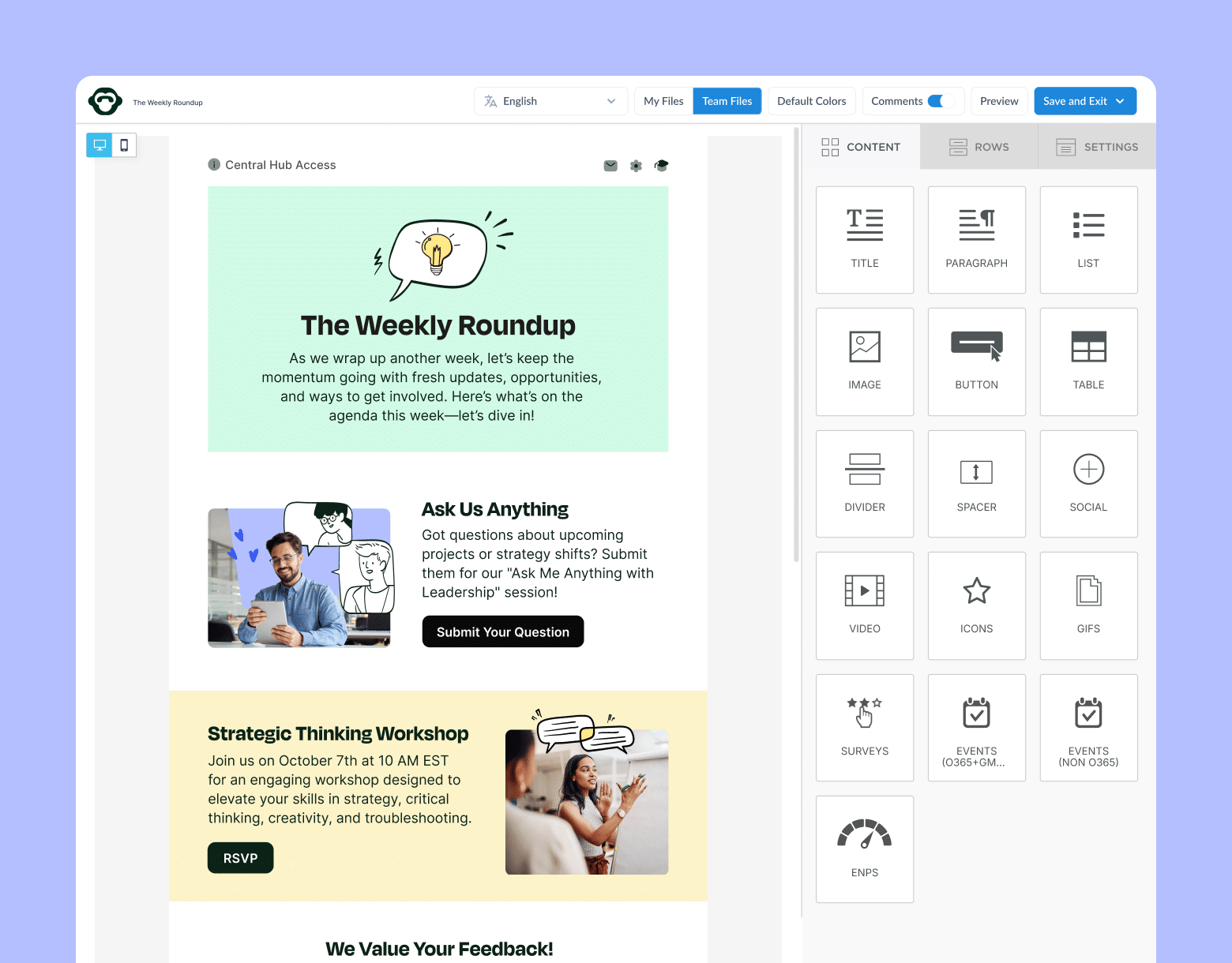
5. Loom
A video messaging tool perfect for async updates, feedback, and training within remote communication software.
Benefits for remote teams:
- Reduces the need for live meetings
- Adds a personal touch to async employee communication
- Ideal for onboarding, product demos, or walkthroughs
How to use it: Record quick updates, process tutorials, or welcome messages for new hires. Embed Looms in email or Slack to clarify complex ideas.
Effective rollout:
- Provide a starter pack on using Loom
- Set a maximum video length to keep content digestible
- Store Loom videos in a shared folder for team-wide access
How to promote utilization:
- Highlight “Loom of the Week” in your remote engagement tools
- Encourage team leads to replace meetings with Looms
- Share success stories on how Loom improved communication
6. Notion
An all-in-one workspace that combines wikis, docs, tasks, calendars, and databases—ideal for remote-first teams looking to centralize their knowledge and workflows.
Benefits for remote teams:
- Combines project management with a collaborative knowledge base
- Supports real-time editing, comments, and mentions for team alignment
- Highly customizable for team dashboards, task tracking, and documentation
How to use it: Use Notion to create a centralized hub for company policies, project planning, meeting notes, and team updates. Teams can track tasks, collaborate on documents, and share knowledge all in one place.
Effective rollout:
- Build a company-wide Notion workspace with templates for onboarding, OKRs, and project plans
- Host team training sessions on Notion structure, permissions, and shortcuts
- Create a “Start Here” page to guide new hires and organize essential resources
How to promote utilization:
- Encourage teams to share weekly updates via Notion to reduce status meetings
- Showcase high-performing pages or dashboards in your remote work communication tools
- Use Notion as your internal wiki and link to it from emails sent through your remote communication software like ContactMonkey
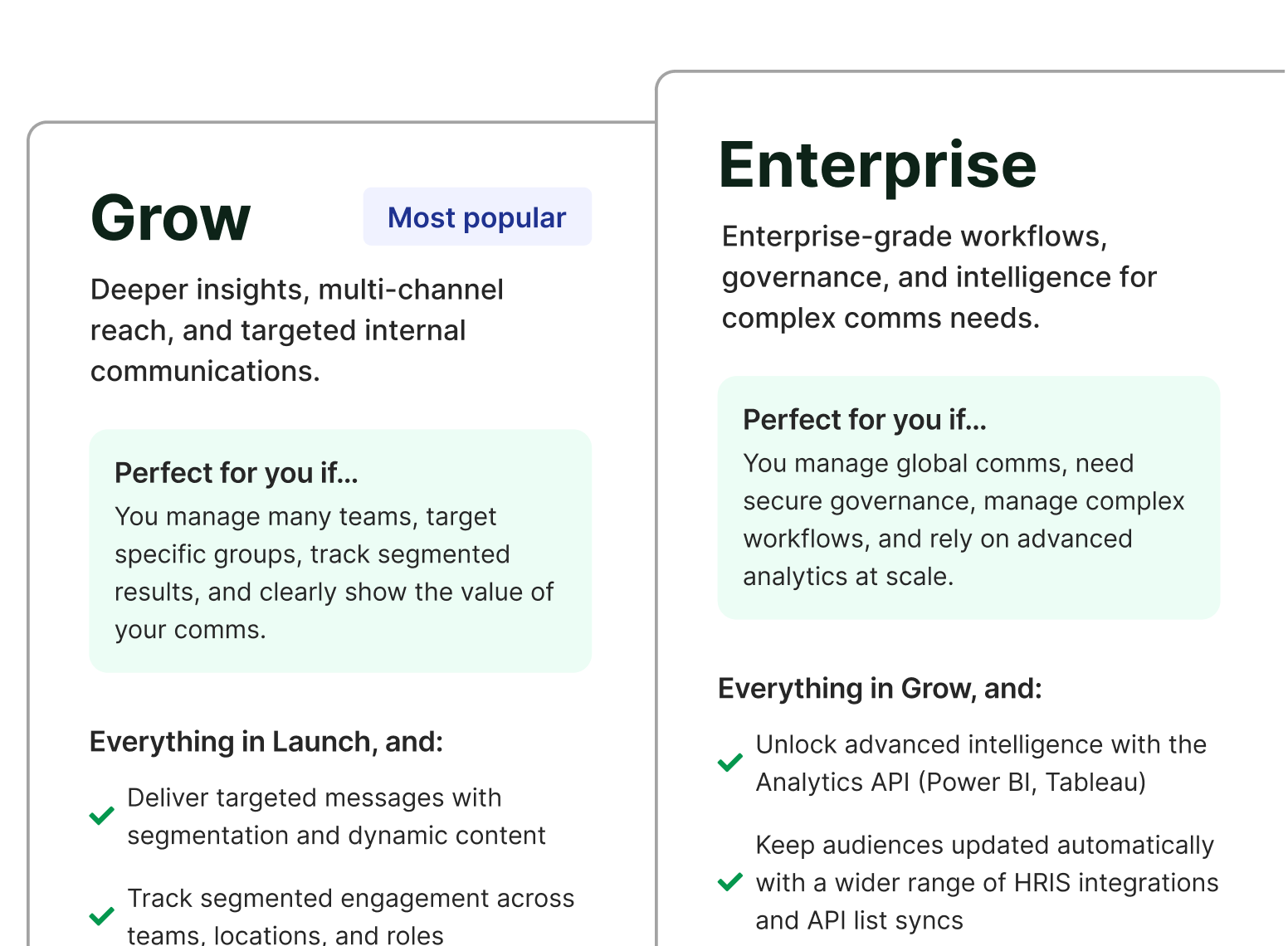
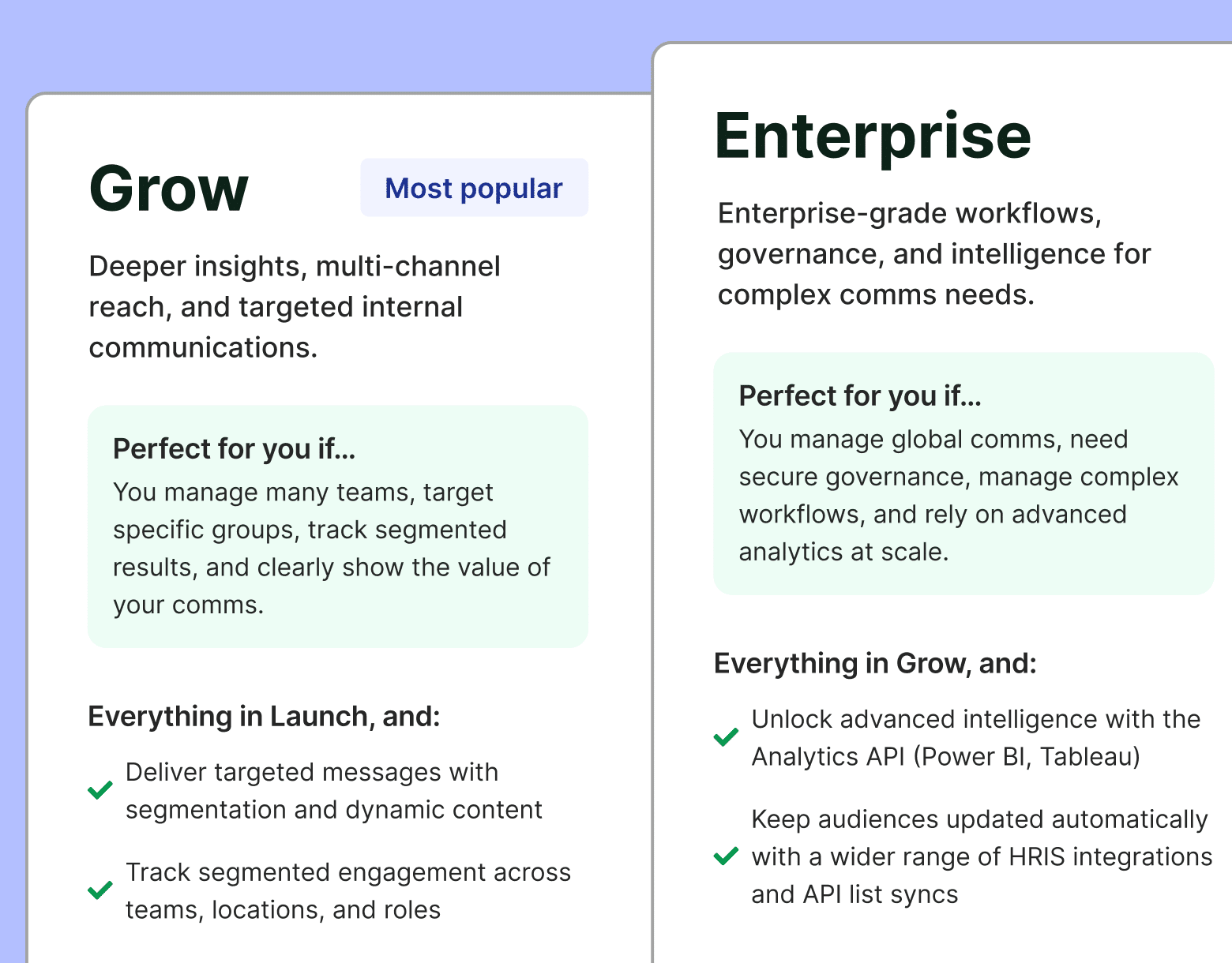
7. Miro
A collaborative online whiteboard tool that empowers remote teams to brainstorm, map ideas, run workshops, and plan visually.
Benefits for remote teams:
- Enables real-time and async collaboration on visual boards
- Ideal for brainstorming, sprint planning, and retrospectives
- Offers templates for workshops, mind maps, product roadmaps, and more
How to use it: Use Miro for visual collaboration during team meetings, planning sessions, design sprints, or onboarding. Teams can drop sticky notes, diagrams, or comments onto shared boards—turning ideas into action, together.
Effective rollout:
- Set up team spaces and organize boards by department or function
- Host live demos and async tutorials to familiarize teams with Miro features
- Provide starter templates for common use cases like SWOT analysis, customer journey mapping
How to Use ContactMonkey with Other Remote Tools
Is your priority to get the most out of your internal comms tech stack? Consider building an internal communication channel matrix so you know which channel best serves specific communication. Then, pair the appropriate tools and channels together.
Here are a few ideas to make ContactMonkey work well alongside your existing remote workforce tools:
Paired with Slack: Reinforce key messages and drive multi-channel engagement
Slack is perfect for quick conversations, but important updates can easily get lost in the scroll.
Use ContactMonkey to:
- Send key announcements via email and follow up with reminders in Slack
- Track who’s engaging with your updates—then nudge non-readers in Slack
- Drive traffic to Slack threads or polls by linking to them in ContactMonkey newsletters
Paired with Zoom: Maximize attendance and post-event feedback
Zoom connects remote teams visually, and ContactMonkey helps drive participation and engagement around it.
Use ContactMonkey to:
- Promote Zoom meetings or events ahead of time with calendar links
- Share recap emails with links to recordings or presentation decks
- Embed post-event surveys to gather insights and action items
Paired with Google Workspace: Connect content to communication
Google Docs, Sheets, and Slides are collaboration staples—but don’t offer engagement insights.
Use ContactMonkey to:
- Share links to Google Docs or Sheets in your internal newsletters
- Track click-through rates to measure document reach and effectiveness
- Highlight Google Calendar events like team meetings, learning sessions, or deadlines
Paired with Loom: Add personality to internal messages and simplify async updates
Loom helps teams explain ideas with voice and video—ContactMonkey ensures those videos reach the right people.
Use ContactMonkey to:
- Embed Loom videos in your newsletters for onboarding, updates, or explainer content
- Track engagement to see who’s watching and for how long
- Use pulse surveys to gather feedback on the clarity and usefulness of Loom content
Paired with Notion: Make knowledge sharing trackable
Notion is great for centralizing knowledge, but without visibility, content can go unnoticed.
Use ContactMonkey to:
- Feature new or important Notion pages in your newsletter
- Monitor engagement to see who’s reading what
- Embed surveys to collect feedback on internal content and resources
Paired with Miro: Make collaboration more visible
Miro excels at visual collaboration—ContactMonkey ensures your team knows when and why to use it.
Use ContactMonkey to:
- Invite team members to upcoming Miro workshops or brainstorming sessions
- Link to newly created Miro boards in newsletters to drive adoption
- Gather feedback on workshop value using built-in survey features
Ready to see how ContactMonkey works in practice? Book a free 15-minute call with one of our experts today to see first-hand how the platform can drive employee engagement and connectivity with a suite of internal comms remote tools.



